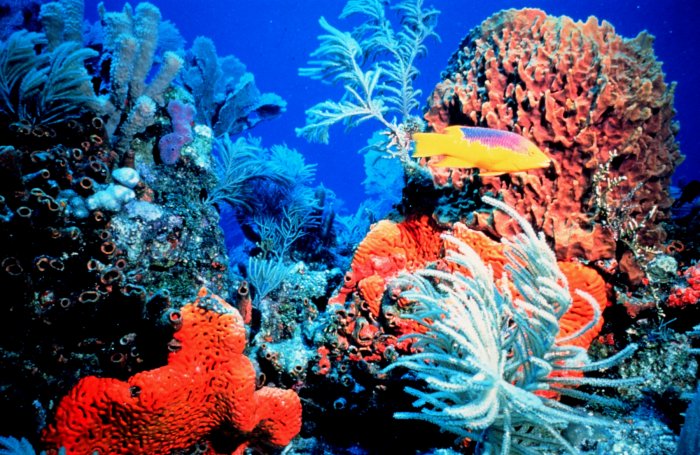
Coral
reefs are extremely complex, productive marine ecosystems that serve as
a home
to hundreds of thousands of species. These fragile ecosystems are
second only to rain forests in the diversity of organisms they sustain.
Reefs
represent the largest biological structure on Earth. The health of reefs
can be greatly affected by the slightest natural or manmade
environmental stresses. Located
between 25 degrees South and 25 degrees North latitude, coral reefs can
survive only in a delicate balance of temperature,
salinity, and light. Corals thrive in waters between 18 degrees
Celsius and 30 degrees Celsius ("About Coral Reefs", CORIS).

Coral reefs are
formed through the accumulation of calcareous exoskeletons of coral
animals,
calcareous red algae, and mollusks. Corals are tiny animals that
are included in the group cnidaria,
which also includes organisms such as hydras, jellyfish, and sea
anemones. Corals are sessile animals that live in large colonies,
feeding by capturing prey with their tentacles. They form the
foundations of reefs by secreting a calcium carbonate skeleton that
provides protection for the coral polyps. Calcium carbonate is
secreted continuously by the coral colony, adding to to the size of the
reef. The hard skeletal secretions build up reefs slowly over
time. Each year, 1 to 20
centimeters, or 0.4 to 7.8 inches, is added to the structure. There
are over 6,000 known species of corals that build different structures
of various shapes and sizes. This contributes to the great
diversity of coral reef systems ("About Coral Reefs," EPA, paragraphs 1-4).
There are three three different types of reefs: barrier, fringing, and atoll.
Barrier reefs are platforms separated from the shoreline by a channel or a lagoon. The longest barrier reefs are found along the coasts of Belize and Australia.
Fringing reefs, the most common type, extend outward from a body of land with no water separating the reef from land.
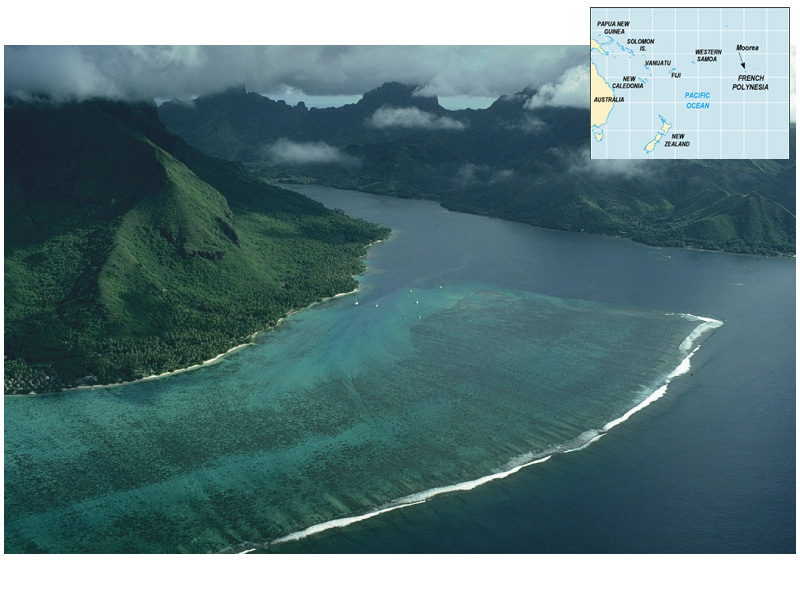
Image 5:
Fringing Reef in French Polynesia
Atolls are coral islands that usually consist of a narrow, horseshoe shaped reef with a shallow, central lagoon. Over 300 atolls are found throughout the South Pacific.
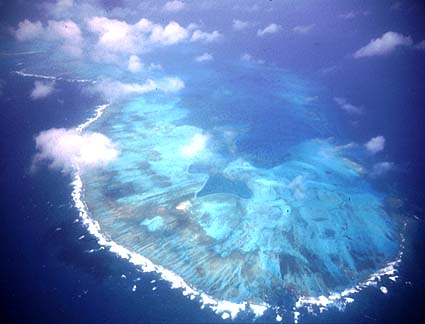
Image
6: Atoll Reef off the coast of Colombia
The
outer layer of a reef is composed of living coral polyps. Corals
polyps depend on an array of symbiotic relationships between consumers
and primary producers to survive. Several species of both fleshy
and calcareous photosynthetic algae, including green algae and
zooxanthellae, live within and around coral polyps ("About Coral
Reefs", CORIS).
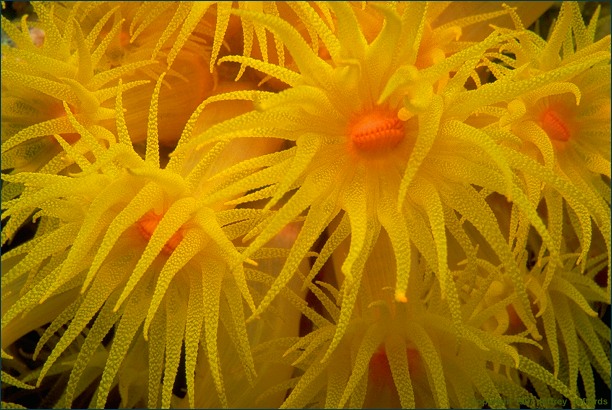
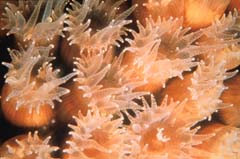
Image
7: Coral
Polyp Image
8: Coral Polyps
Single
celled, round algae called zooxanthellae live within the gastrodermal
cells of the host tissue, providing both food and essential compounds
to the coral. The corals provide a protective environment for
zooxanthellae to photosynthesize. Approximately 90% of
photosynthetic products are passed to the corals from
zooxanthellae. These algae also leak amino acids, carbohydrates,
and small peptides to the coral. Coral animals also obtain
nutrients, such as phosphorous, by feeding on zooplankton that
they capture at night with their tentacles. In addition to
protection, corals provide zooxanthellae with plant nutrients from the
waste metabolism produced by digestion of zooplankton in return.
Microscopic zooxanthellae form the basis of the coral reef food
chain. The mutual exchange of algal photosynthetic products and
metabolites from corals is the key to the biological productivity of
reefs and the limestone secreting capacity of reef building
corals ("About Coral Reefs", CORIS.)
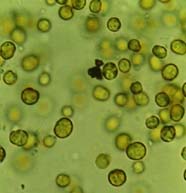
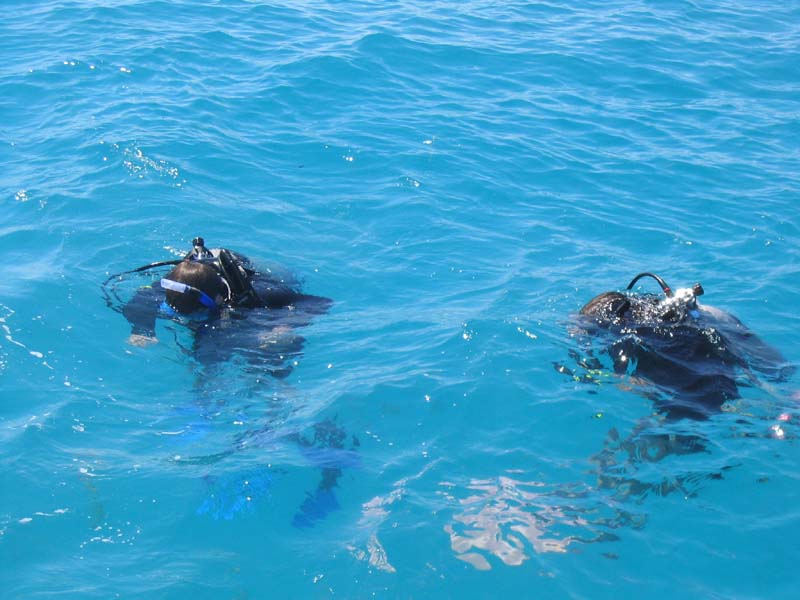
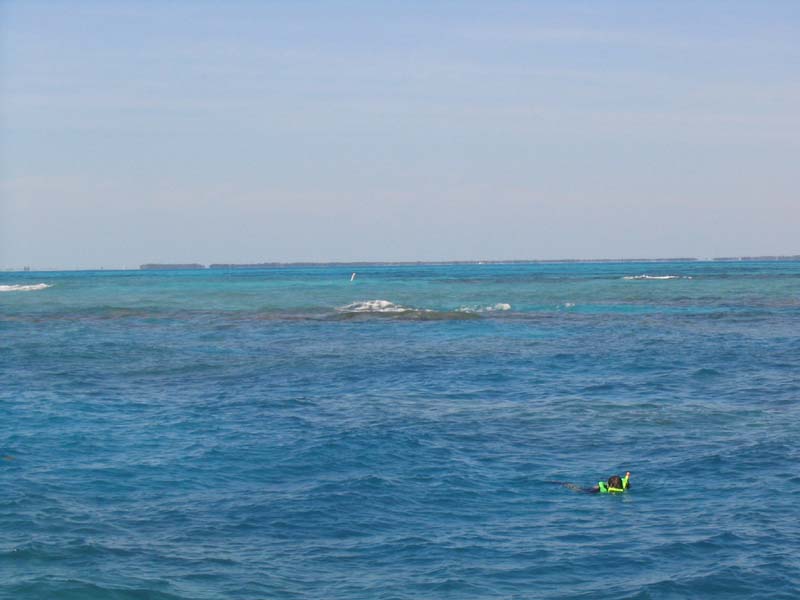
Coral
reefs are very productive although surrounded by unproductive
waters. However, reefs are extremely sensitive to environmental
stresses from anthropogenic activities. It is estimated that 50-70% of
the world's reefs are at risk. Eutrophication, increases in
sedimentation, over exploitation of marine species, mining, physical
destruction, and bleaching pose serious threats to the health of reef
systems.